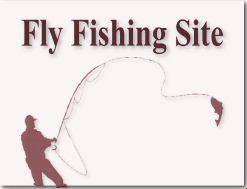|
|
ARTICLE
10
|
Fly Fishing Basics
The ancient art of fly fishing goes back goes back to the second century with records by the Roman Claudius Aelianus crediting the use of artificial fly practiced by the Macedonian anglers on the Astraeus River. The record states “...they have planned a snare for the fish, and get the better of them by their fisherman's craft. . . . They fasten red . . . wool round a hook, and fit on to the wool two feathers which grow under a cock's wattles, and which in color are like wax. Their rod is six feet long, and their line is the same length. Then they throw their snare, and the fish, attracted and maddened by the colour, comes straight at it, thinking from the pretty sight to gain a dainty mouthful; when, however, it opens its jaws, it is caught by the hook, and enjoys a bitter repast, a captive.” Now, more than fifteen centuries later, fly fishing is a world wide phenomenon practiced by enthusiasts, nature lovers and environmentalists from different walks of life. Fly fishing is an angling method distinct from other kinds of fishing. There are actually five kinds of popular fishing methods namely Bait Fishing, Spin Fishing, Trolling, Ice Fishing and Fly-Fishing. Fly fishing, for many fishermen, is the most difficult of all the known methods of angling. A rod which is a lot lighter and longer one than those used for bait fishing and spin fishing is used by the fly angler. These fly fishing rods can be as long as 3 meters (10 feet) in when fishing in fresh water or 4 meters (14 feet ) long when used for salt water fishing. The fly rod is whisked forward and back by the angler using only the forearm. Typically, the angler moves the rod from 10 o’clock position to 2 o’clock and avoiding the line to touch the ground or the water. The angler continues the movement until such time that a considerable amount of line become airborne. After that, the angler then casts the line to a specific spot with a sharp but smooth snap of his wrist. The fly is an artificial bait prepared mimic small insects and animals. It is made of hairs feathers and plastic and is wrapped around a hook. There are five kinds of flies. The dry is fly looks like insects floating on the water while the wet fly imitates insects below surface of the water. The streamer fly is a bait that is made to look like an injured fish. The terrestrial fly mimics ground insects like butterflies, moths and grasshoppers that have fallen into the water. Finally, the nymph fly imitates pupa and larva forms of insects. There are many vacation and tour packages that include fly fishing as one of the activities. Fly fishing destinations are springing up everywhere, especially in the rural parts of Canada, the United States, England, Germany, Switzerland, Norway, Sweden, New Zealand, Australia, Russia and Mongolia. Fly fishing is relatively new in Japan but is fast become popular specially with the beautiful sceneries of the country.
|


